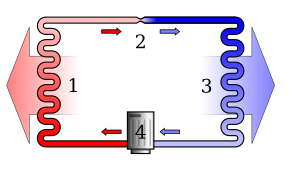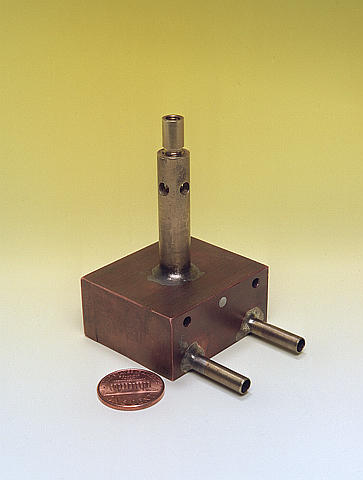I believe in carbon sequestration because I believe that carbon and other elements in smokestack effluent can be recycled. That is they can be used for feedstock for algae or concrete. Injecting it into the ground however is not an option. I have said that for 10 years while everyone else was sucking up to the power companies.
http://www.newsweek.com/id/173086?GT1=43002
Blowing Smoke
Is clean coal technology fact or fiction?
Dec 9, 2008 | Updated: 8:08 a.m. ET Dec 9, 2008
A single power plant in western Pennsylvania is one of the 12 biggest carbon dioxide polluting power plants in the U.S. emitting 17.4 million tons annually.
In the elusive search for the reliable energy source of the future, the prospect of clean coal is creating a lot of buzz. But while the concept—to scrub coal clean before burning, then capture and store harmful gases deep underground—may seem promising, a coalition of environment and climate groups argue in a new media campaign that the technology simply doesn’t exist.
The Alliance for Climate Protection and several other prominent organizations—including the Sierra Club and National Resources Defense Council—launched a multipronged campaign to “debrand” the clean part of clean coal, pointing out that there’s no conclusive evidence to confirm the entire process would work the way it’s being marketed. In the campaign’s TV ad, a technician sarcastically enters the door of a clean coal production plant, only to find there’s nothing on the other side. “Take a good long look,” he says, standing in a barren desert, “this is today’s clean coal technology.”
The campaign was designed to combat the well-funded coal industry, which formed a trade association in April to promote the idea of clean coal. Joe Lucas, a vice president for the American Coalition for Clean Coal Electricity, says that the technology does exist, although it’s still in early development stages. “With the current research being done, we think we can get the technology up and running within 10 to 15 years,” he says. Activists like Brian Hardwick, chief spokesman for the Alliance for Climate Protection, aren’t so sure. Hardwick spoke to NEWSWEEK’s Daniel Stone about why the idea of clean coal shouldn’t be considered a solution.
:}
And it makes for great TV:
http://www.thisisreality.org/#/?p=canary
:}
Of course up till now they have been peddling other “stuff”:
http://science.howstuffworks.com/clean-coal.htm
What is clean coal technology?
by Sarah Dowdey
Coal is the dirtiest of all fossil fuels. When burned, it produces emissions that contribute to global warming, create acid rain and pollute water. With all of the hoopla surrounding nuclear energy, hydropower and biofuels, you might be forgiven for thinking that grimy coal is finally on its way out.
But coal is no sooty remnant of the Industrial Revolution — it generates half of the electricity in the United States and will likely continue to do so as long as it’s cheap and plentiful [source: Energy Information Administration]. Clean coal technology seeks to reduce harsh environmental effects by using multiple technologies to clean coal and contain its emissions.
When coal burns, it releases carbon dioxide and other emissions in flue gas, the billowing clouds you see pouring out of smoke stacks. Some clean coal technologies purify the coal before it burns. One type of coal preparation, coal washing, removes unwanted minerals by mixing crushed coal with a liquid and allowing the impurities to separate and settle.
Other systems control the coal burn to minimize emissions of sulfur dioxide, nitrogen oxides and particulates. Wet scrubbers, or flue gas desulfurization systems, remove sulfur dioxide, a major cause of acid rain, by spraying flue gas with limestone and water. The mixture reacts with the sulfur dioxide to form synthetic gypsum, a component of drywall.
Low-NOx (nitrogen oxide) burners reduce the creation of nitrogen oxides, a cause of ground-level ozone, by restricting oxygen and manipulating the combustion process. Electrostatic precipitators remove particulates that aggravate asthma and cause respiratory ailments by charging particles with an electrical field and then capturing them on collection plates.
Where do the emissions go?
Carbon capture and storage — perhaps the most promising clean coal technology — catches and sequesters carbon dioxide (CO2) emissions from stationary sources like power plants. Since CO2 contributes to global warming, reducing its release into the atmosphere has become a major international concern. In order to discover the most efficient and economical means of carbon capture, researchers have developed several technologies.

Aaron Cobbett/Stone/Getty Images
Coal isn’t going anywhere soon — it generates half of the U.S. power supply.
Flue-gas separation removes CO2 with a solvent, strips off the CO2 with steam, and condenses the steam into a concentrated stream. Flue gas separation renders commercially usable CO2, which helps offset its price. Another process, oxy-fuel combustion, burns the fuel in pure or enriched oxygen to create a flue gas composed primarily of CO2 and water — this sidesteps the energy-intensive process of separating the CO2 from other flue gasses. A third technology, pre-combustion capture, removes the CO2 before it’s burned as a part of a gasification process.
:}
Here is where the bullshit starts, “Why would they have to do anything after sequestration?”
:}
After capture, secure containers sequester the collected CO2 to prevent or stall its reentry into the atmosphere. The two storage options, geologic and oceanic, must contain the CO2 until peak emissions subside hundreds of years from now. Geologic storage involves injecting CO2 into the earth. Depleted oil or gas fields and deep saline aquifers safely contain CO2 while unminable coal seams absorb it. A process called enhanced oil recovery already uses CO2 to maintain pressure and improve extraction in oil reservoirs.
:}





